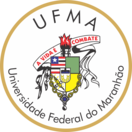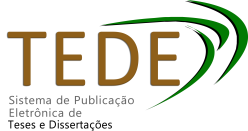| Compartilhamento |


|
Use este identificador para citar ou linkar para este item:
https://tedebc.ufma.br/jspui/handle/tede/6208Registro completo de metadados
| Campo DC | Valor | Idioma |
|---|---|---|
| dc.creator | LIMA, Waldineis Brito | - |
| dc.creator.Lattes | https://lattes.cnpq.br/6548943041963637 | por |
| dc.contributor.advisor1 | COSTA FILHO, Almir Valente | - |
| dc.contributor.advisor1Lattes | http://lattes.cnpq.br/1351970316851567 | por |
| dc.contributor.referee1 | COSTA FILHO, Almir Valente | - |
| dc.contributor.referee1Lattes | http://lattes.cnpq.br/1351970316851567 | por |
| dc.contributor.referee2 | MATOS, Elisene Castro | - |
| dc.contributor.referee2Lattes | https://lattes.cnpq.br/7947326047449437 | por |
| dc.contributor.referee3 | BARROS, Luciana Silva Aguiar Mendes | - |
| dc.contributor.referee3Lattes | http://lattes.cnpq.br/9454519770693683 | por |
| dc.date.accessioned | 2025-06-04T11:08:46Z | - |
| dc.date.issued | 2025-02-27 | - |
| dc.identifier.citation | LIMA, Waldineis Brito. “A importância do audiovisual na formação contemporânea: Impacto do vídeo no ensino de arte nos anos finais do ensino fundamental”. 2025. 121 f. Dissertação( Programa de Pós-graduação em Rede - Prof-Artes em Rede Nacional/CCH) - Universidade Federal do Maranhão, São Luís, 2025. | por |
| dc.identifier.uri | https://tedebc.ufma.br/jspui/handle/tede/6208 | - |
| dc.description.resumo | Esta pesquisa investigou a relevância da utilização do vídeo como ferramenta pedagógica no ensino de Arte para os anos finais do Ensino Fundamental. O estudo, vinculado ao Programa de Mestrado Profissional em Artes (PROF-ARTES), foi realizado com professores e alunos do 9º ano em Marabá-PA. A investigação constatou a prevalência de educadores com formação em áreas distintas da Arte e a significativa carência de recursos didáticos específicos. Adotando uma abordagem metodológica quanti-qualitativa, a pesquisa analisou oficinas implementadas em sala de aula, com o objetivo de verificar o impacto da integração do vídeo no processo de aprendizagem. A análise considerou o aprendizado multimodal e a dinâmica de interação estabelecida entre alunos e educadores. A justificativa para a realização deste estudo residiu na expressiva visibilidade do audiovisual na contemporaneidade, em seu potencial para enriquecer o ensino de Arte, em sua natureza interdisciplinar, em sua capacidade de contribuir para o desenvolvimento de diversas habilidades nos alunos, em sua relevância para a pesquisa acadêmica e em sua aplicabilidade prática, investigando especificamente o impacto dos vídeos na motivação, criatividade e desempenho acadêmico dos estudantes. As oficinas desenvolvidas abordaram temas como Arte Efêmera, Monotipia e a vida e obra de Frida Kahlo, e incorporaram o uso de vídeos como recurso para enriquecer o conteúdo e fomentar um ambiente de aprendizagem interativo. O objetivo geral da pesquisa foi apurar as proposições do trabalho, visando sondar o impacto das oficinas na criatividade dos alunos no contexto do fazer artístico nas aulas de Arte nos 9º anos. A coleta de dados ocorreu entre os anos de 2023 e 2024, envolvendo 45 alunos. A questão científica central que norteou este trabalho foi como a integração do vídeo poderia enriquecer as aulas de Arte no Ensino Fundamental. Os dados foram coletados por meio de questionários, rodas de conversa, registros de observações, consultas bibliográficas e análise das produções dos alunos. A análise e interpretação desses dados permitiram ampliar a compreensão sobre o uso pedagógico do vídeo e estimular a reprodução de trabalhos com essa temática. O estudo defendeu a integração da educação audiovisual no currículo como uma estratégia fundamental para preparar os alunos para a sociedade digital, promovendo o desenvolvimento da alfabetização midiática, da criatividade e do senso crítico. | por |
| dc.description.abstract | This research investigated the relevance of using video as a pedagogical tool in teaching Art for the final years of Elementary School. The study, linked to the Professional Master's Program in Arts (PROF-ARTES), was conducted with teachers and students of the 9th grade in Marabá-PA. The investigation found the prevalence of educators with training in areas other than Art and the significant lack of specific teaching resources. Adopting a quantitative-qualitative methodological approach, the research analyzed workshops implemented in the classroom, with the objective of verifying the impact of the integration of video in the learning process. The analysis considered multimodal learning and the dynamics of interaction established between students and educators. The justification for carrying out this study was the expressive visibility of audiovisual in contemporary times, its potential to enrich art teaching, its interdisciplinary nature, its ability to contribute to the development of various skills in students, its relevance for academic research and its practical applicability, specifically investigating the impact of videos on students' motivation, creativity and academic performance. The workshops developed addressed topics such as Ephemeral Art, Monotype and the life and work of Frida Kahlo, and incorporated the use of videos as a resource to enrich the content and foster an interactive learning environment. The general objective of the research was to clarify the proposals of the work, aiming to probe the impact of the workshops on students' creativity in the context of artistic creation in art classes in the 9th grade. Data collection took place between 2023 and 2024, involving 45 students. The central scientific question that guided this work was how the integration of video could enrich art classes in elementary school. Data were collected through questionnaires, discussion groups, observation records, bibliographical consultations and analysis of students' productions. The analysis and interpretation of these data allowed for a broader understanding of the pedagogical use of video and encouraged the reproduction of works on this theme. The study advocated the integration of audiovisual education into the curriculum as a fundamental strategy to prepare students for the digital society, promoting the development of media literacy, creativity and critical thinking. | eng |
| dc.description.provenance | Submitted by Maria Aparecida (cidazen@gmail.com) on 2025-06-04T11:08:46Z No. of bitstreams: 1 WALDINEIS BRITO LIMA.pdf: 4178288 bytes, checksum: cdb056d7c0e9803913cf5285bcd1b0e0 (MD5) | eng |
| dc.description.provenance | Made available in DSpace on 2025-06-04T11:08:46Z (GMT). No. of bitstreams: 1 WALDINEIS BRITO LIMA.pdf: 4178288 bytes, checksum: cdb056d7c0e9803913cf5285bcd1b0e0 (MD5) Previous issue date: 2025-02-27 | eng |
| dc.format | application/pdf | * |
| dc.language | por | por |
| dc.publisher | Universidade Federal do Maranhão | por |
| dc.publisher.department | COORDENAÇÃO DO CURSO DE ARTES VISUAIS/CCH | por |
| dc.publisher.country | Brasil | por |
| dc.publisher.initials | UFMA | por |
| dc.publisher.program | PROGRAMA DE PÓS-GRADUAÇÃO EM REDE - PROF-ARTES EM REDE NACIONAL/CCH | por |
| dc.rights | Acesso Aberto | por |
| dc.subject | Vídeo; | por |
| dc.subject | Educação audiovisual; | por |
| dc.subject | Criatividade; | por |
| dc.subject | Ensino de Arte | por |
| dc.subject | Video; | por |
| dc.subject | Audiovisual education; | eng |
| dc.subject | Creativity; | eng |
| dc.subject | Art education | eng |
| dc.subject.cnpq | Artes | por |
| dc.title | “A IMPORTÂNCIA DO AUDIOVISUAL NA FORMAÇÃO CONTEMPORÂNEA: IMPACTO DO VÍDEO NO ENSINO DE ARTE NOS ANOS FINAIS DO ENSINO FUNDAMENTAL” | por |
| dc.title.alternative | “THE IMPORTANCE OF AUDIOVISUALS IN CONTEMPORARY EDUCATION: THE IMPACT OF VIDEO ON ART EDUCATION IN THE FINAL YEARS OF ELEMENTARY EDUCATION” | eng |
| dc.type | Dissertação | por |
| Aparece nas coleções: | DISSERTAÇÃO DE MESTRADO - PROGRAMA DE PÓS-GRADUAÇÃO EM REDE - PROF-ARTES EM REDE NACIONAL | |
Arquivos associados a este item:
| Arquivo | Descrição | Tamanho | Formato | |
|---|---|---|---|---|
| WALDINEIS BRITO LIMA.pdf | Dissertação de Mestrado | 4,08 MB | Adobe PDF | Baixar/Abrir Pré-Visualizar |
Os itens no repositório estão protegidos por copyright, com todos os direitos reservados, salvo quando é indicado o contrário.




